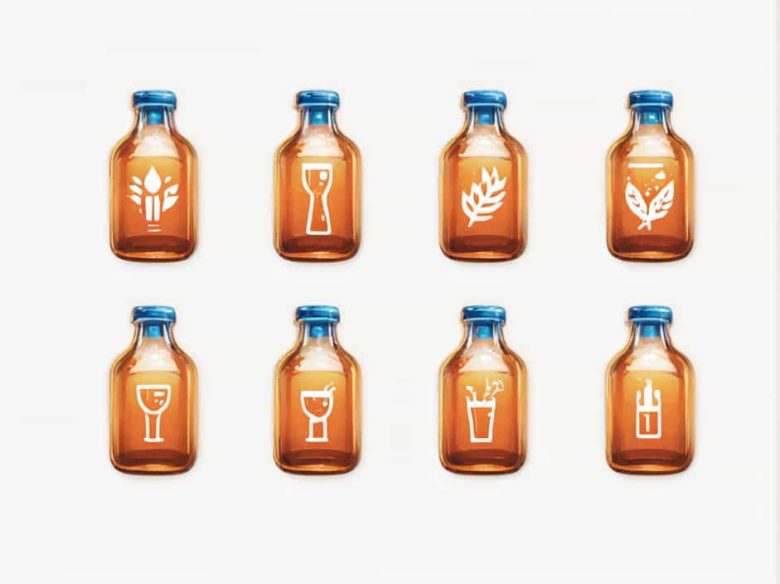Potassium permanganate (KMnO₄) is a strong oxidizing agent widely used in organic chemistry to oxidize various compounds including primary and secondary alcohols. However tertiary alcohols behave differently in oxidation reactions due to their molecular structure.
This topic explores whether KMnO₄ can oxidize tertiary alcohols the underlying reaction mechanisms and the reasons behind their resistance to oxidation.
What Are Tertiary Alcohols?
Definition and Structure
A tertiary alcohol is an alcohol where the hydroxyl (-OH) group is attached to a carbon atom that is bonded to three other carbon atoms. This structure makes them more stable compared to primary and secondary alcohols.
General Formula of Tertiary Alcohols
where R represents an alkyl group.
Examples of Tertiary Alcohols
- Tert-butanol (C₄H₁₀O)
- 2-Methyl-2-propanol
- 3-Methyl-3-pentanol
Oxidation of Alcohols with KMnO₄
Potassium permanganate is an effective oxidizing agent that oxidizes primary and secondary alcohols via redox reactions.
Oxidation of Primary and Secondary Alcohols
- Primary alcohols → Oxidized to aldehydes → Further oxidized to carboxylic acids.
- Secondary alcohols → Oxidized to ketones and usually do not oxidize further under normal conditions.
Why Doesn’t KMnO₄ Oxidize Tertiary Alcohols?
Tertiary alcohols do not undergo oxidation with KMnO₄ under normal conditions. This resistance is due to several chemical factors:
1. Lack of Hydrogen on the Alpha Carbon
- Oxidation of alcohols typically involves the removal of a hydrogen atom from the carbon bonded to the hydroxyl group (alpha carbon).
- In tertiary alcohols the alpha carbon has no hydrogen atoms available for removal preventing the oxidation process.
2. Strong C-C Bonds Prevent Cleavage
- KMnO₄ oxidizes alcohols by forming a carbonyl compound (aldehyde or ketone).
- Tertiary alcohols lack a C-H bond on the alpha carbon making oxidation impossible without breaking a C-C bond which is highly unfavorable.
3. Harsh Conditions May Lead to Carbon Skeleton Breakdown
- Under very strong oxidative conditions (such as using concentrated KMnO₄ and heating) tertiary alcohols can degrade.
- Instead of oxidation they undergo fragmentation or cleavage breaking the carbon chain into smaller molecules like carboxylic acids carbon dioxide and ketones.
What Happens If KMnO₄ Reacts with a Tertiary Alcohol?
If tertiary alcohols are treated with KMnO₄ in mild conditions no visible reaction occurs. However under extreme conditions (such as high temperature and strong acidic or alkaline environments) the reaction leads to:
- Carbon-carbon bond cleavage → Breaking the molecular structure.
- Formation of smaller organic molecules → Such as ketones carboxylic acids and CO₂.
- No simple oxidation product → Unlike primary or secondary alcohols.
Example: Attempted Oxidation of Tert-Butanol
Tert-butanol (C₄H₁₀O) does not react with KMnO₄ under normal conditions because it has no hydrogen on the alpha carbon.
- Under extreme conditions it may undergo decomposition into acetic acid (CH₃COOH) carbon dioxide (CO₂) and water (H₂O).
Alternative Oxidation Methods for Tertiary Alcohols
Although KMnO₄ is ineffective for oxidizing tertiary alcohols other strong oxidation methods can break them down:
1. Acidic or Basic Permanganate (Extreme Conditions)
- In concentrated KMnO₄ under strong acidic or basic conditions tertiary alcohols may undergo carbon-carbon bond cleavage leading to complex degradation products.
2. Catalytic Oxidation (Metal Catalysts)
- Certain metal catalysts (such as platinum or palladium) under harsh oxidative conditions can break tertiary alcohols.
- This is more common in industrial applications.
3. Photochemical Oxidation
- Some tertiary alcohols can undergo oxidation in the presence of UV light and oxygen.
Tertiary alcohols cannot be oxidized by KMnO₄ under normal conditions because they lack a hydrogen atom on the alpha carbon. Unlike primary and secondary alcohols which form aldehydes ketones or carboxylic acids tertiary alcohols are resistant to oxidation due to their stable molecular structure.
In extreme conditions tertiary alcohols may undergo decomposition rather than oxidation breaking into smaller organic molecules. For oxidation of tertiary alcohols alternative methods such as photochemical oxidation or catalytic oxidation are more effective.



